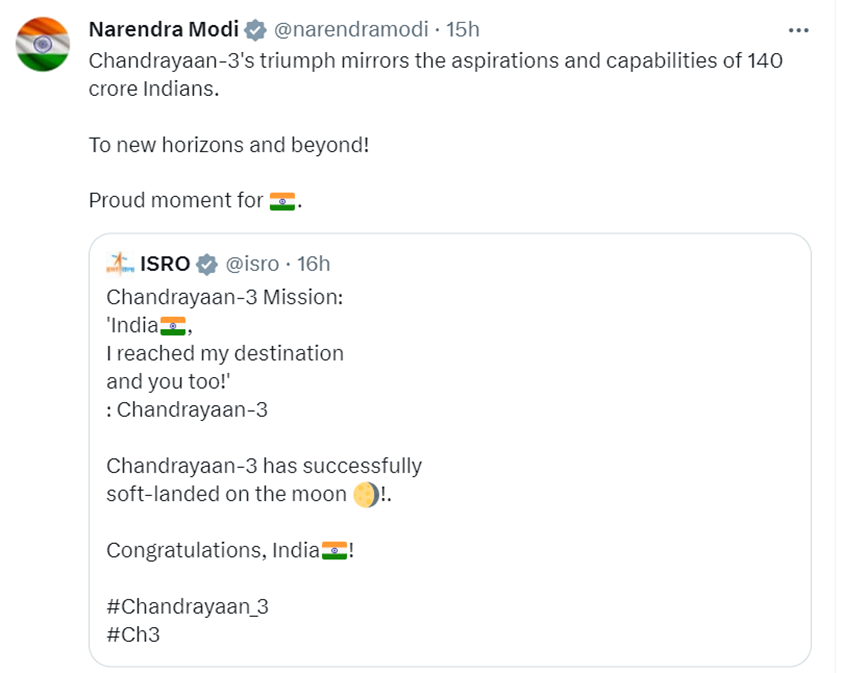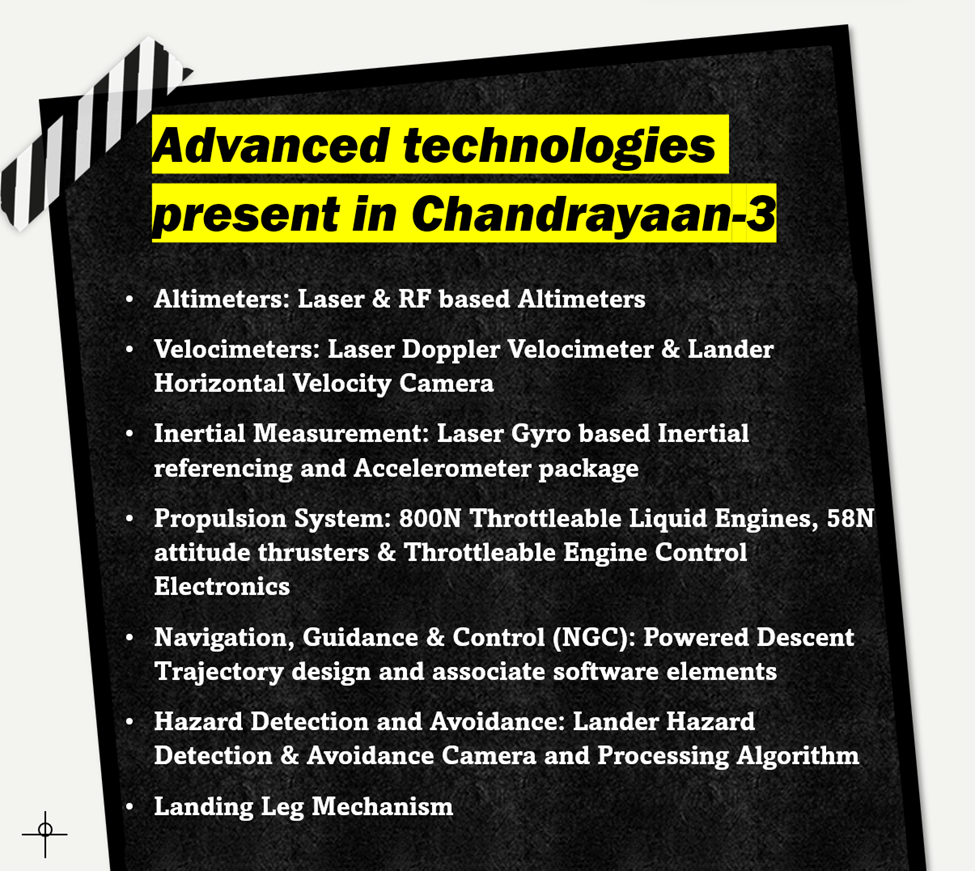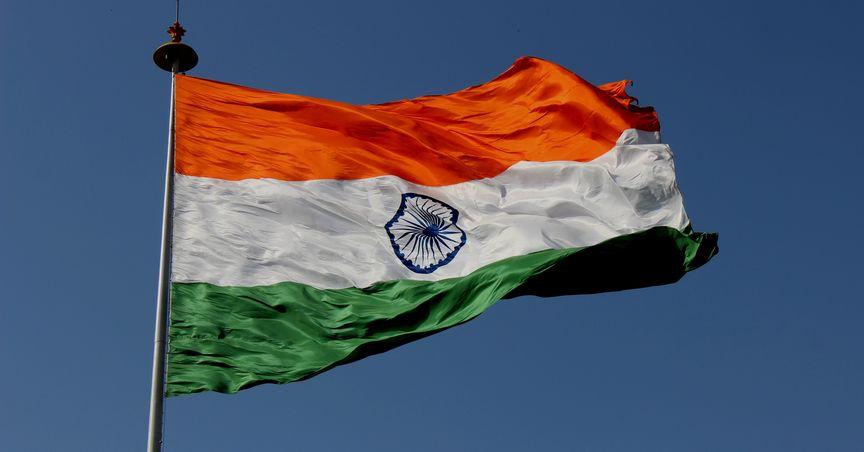Highlights
- India’s Chandrayaan-3 spacecraft has made a soft landing on the Moon's south pole.
- India is now the fourth country to make a successful landing on the Moon after the former Soviet Union, China, and the United States.
- The Chandrayaan-3 mission has been accomplished with a budget of mere INR 6.15 billion.
- Experts believe the Moon may have crucial reserves of water and valuable elements.
On 23 August 2023, India marked a new chapter in the history of space technology by successfully completing the Chandrayaan-3 lunar mission. The lander module of Indian Space Research Organisation's (ISRO) spacecraft, Chandrayaan-3 made a soft landing on the Moon on Wednesday, helping India becoming the fourth country to achieve this feat. India also became the first country to make a successful landing on the Moon's south pole.
Earlier, the former Soviet Union, China, and the United States have achieved this feat.
Success of this mission, completed within a budget of about INR 6.15 billion (USD 74.54 million), holds significance for India as it cements the country's position in executing space engineering projects at low cost. The successful Chandrayaan-3 mission is a remarkable achievement in the field of Science, Engineering, and Technology for India as well as for the entire world, marking a phenomenal progress in space exploration.
Post soft landing of the ISRO’s spacecraft, India Prime Minister Narendra Modi hailed the success. He watched the touchdown virtually from South Africa, where he is participating in the 2023 BRICS (Brazil, Russia, India, China, and South Africa) summit, and waved the Indian flag to cheer for the nation. Calling it a historic day for the country's space sector, PM Modi congratulated the ISRO team for the success of Chandrayaan-3 lunar mission.
 The historic Chandrayaan-3 lunar mission
The historic Chandrayaan-3 lunar mission
The spacecraft Chandrayaan-3 begun its lunar journey on July 14 from the Satish Dhawan Space Center in Sriharikota, located in Andhra Pradesh, India.
After its landing on the south pole, the Pragyan-rover has been successfully deployed on the Moon from inside Vikram-lander. Also, the communication path has been set up between the Ch-3 Lander and Mission Operations Complex, ISTRAC in Bengaluru, India. Now, the spacecraft is expected to spend around 14 days on the lunar surface. During this time frame, it will perform a few experiments, such as a spectrometer test analysing the mineral composition of the area.

Prominence of Moon’s south pole
The unexplored south pole region of the Moon lies far from the equatorial region that has been previously targeted during lunar missions. The surface is full of craters and deep trenches, as per reports by scientists.
It is a region with difficult terrain posing challenges for lunar missions attempted previously. Chandrayaan-3 was India’s second attempt to make a soft landing on the Moon. ISRO had deployed an orbiter successfully during the Chandrayaan-2 mission; however, its lander could not make a successful soft landing. Also, just a few days back Russia’s Luna-25 spacecraft made a crash landing on the Moon.
Various space organisations across the world have been attempting to reach and explore the Moon as experts believe its surface may have crucial reserves of valuable minerals.



